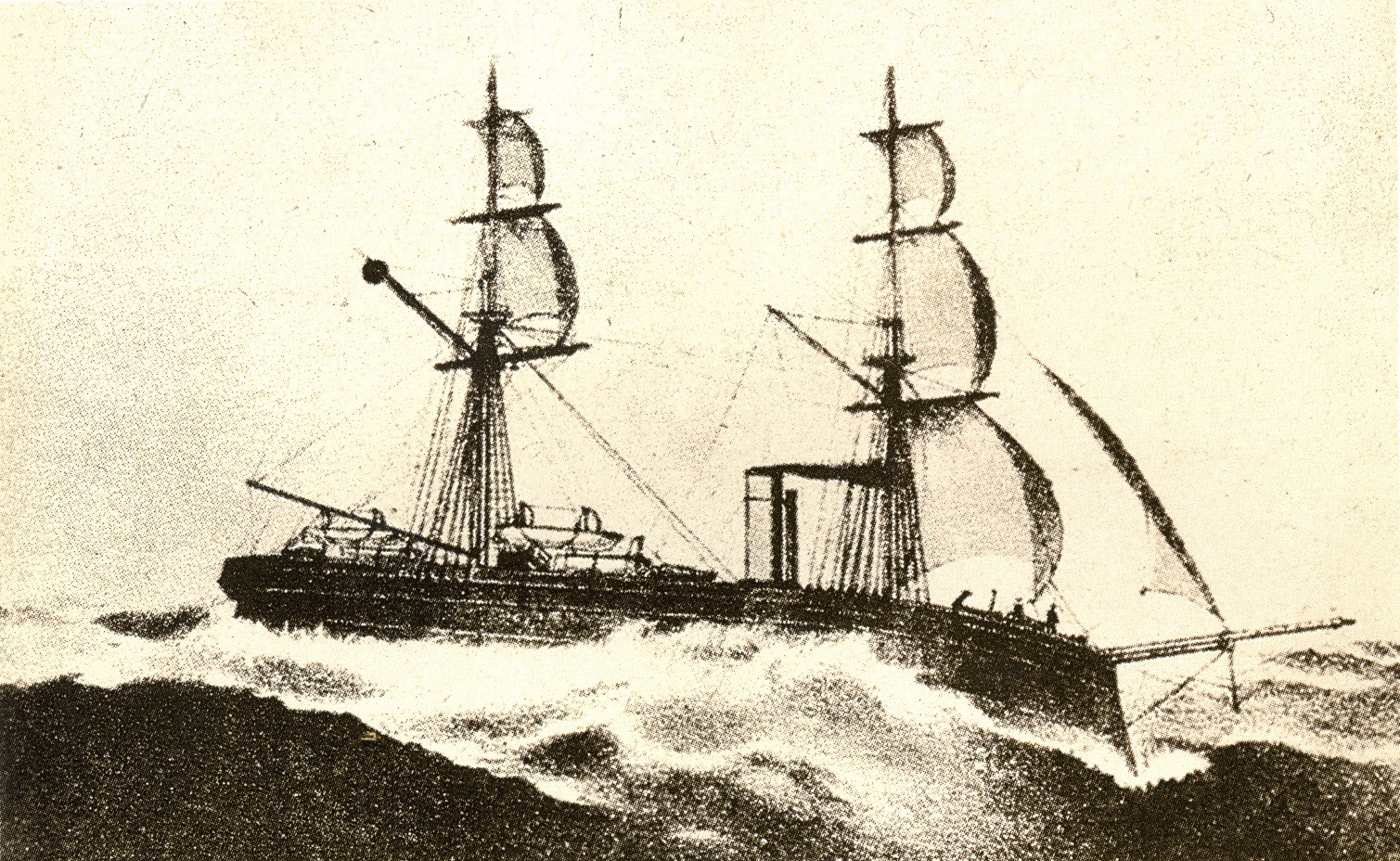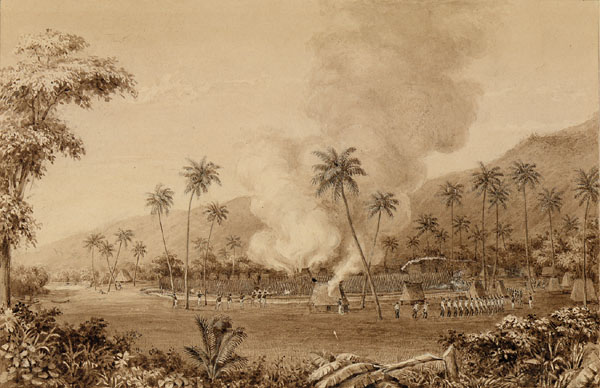|
General Sherman Incident
The ''General Sherman'' incident ( ko, 제너럴셔먼호 사건) was the destruction of the American merchant ship '' SS General Sherman'' in the Taedong River during an unsuccessful and illegal attempt by the ship's crew to open up trade with the isolationist Joseon dynasty of Korea. With the rapid increase in Western imperialism in Asia during the 19th century, Asian nations came under increasing pressure to end their isolationist policies. Despite China and Japan being forcibly opened to foreign trade by Western powers, Korea maintained its isolationism. The ''General Sherman'' purchased stocks of cotton textiles, tinware, mirrors and glassware from Tianjin before sailing up the Taedong River. Korean officials informed the ship's captain that he was not allowed to trade in Korea; these instructions were ignored. Eventually, regent Daewongun, believing the ''General Sherman'' to be a French Navy warship on a punitive mission to avenge the deaths of Catholic priests in Ko ... [...More Info...] [...Related Items...] OR: [Wikipedia] [Google] [Baidu] |
United States Expedition To Korea
The United States expedition to Korea, known in Korea as the ''Shinmiyangyo'' () or simply the Korean Expedition, was the first American military action in Korea and took place predominantly on and around Ganghwa Island in 1871. The reason for the presence of the American land and naval force in Korea was to support an American diplomatic delegation sent to negotiate trade and political relations with the peninsular nation led by the American ambassador to China, Frederick Low, to ascertain the fate of the merchant ship ''General Sherman'', which had gone missing while visiting Korea in 1866. However, according to a ''National Interest'' article, Low's own records indicated the punitive campaign was motivated by a need to demonstrate American power over what he considered to be a weaker nation. Previously, the American commanders had felt entitled to be able to "peacefully" enter Korean waters for survey and trade using heavily armed warships and had ignored repeated diplomati ... [...More Info...] [...Related Items...] OR: [Wikipedia] [Google] [Baidu] |
Mirror
A mirror or looking glass is an object that Reflection (physics), reflects an image. Light that bounces off a mirror will show an image of whatever is in front of it, when focused through the lens of the eye or a camera. Mirrors reverse the direction of the image in an equal yet opposite angle from which the light shines upon it. This allows the viewer to see themselves or objects behind them, or even objects that are at an angle from them but out of their field of view, such as around a corner. Natural mirrors have existed since prehistoric times, such as the surface of water, but people have been manufacturing mirrors out of a variety of materials for thousands of years, like stone, metals, and glass. In modern mirrors, metals like silver or aluminium are often used due to their high reflectivity, applied as a thin coating on glass because of its naturally smooth and very Hardness (materials science), hard surface. A mirror is a Wave (physics), wave reflector. Light consis ... [...More Info...] [...Related Items...] OR: [Wikipedia] [Google] [Baidu] |
Korea
Korea ( ko, 한국, or , ) is a peninsular region in East Asia. Since 1945, it has been divided at or near the 38th parallel, with North Korea (Democratic People's Republic of Korea) comprising its northern half and South Korea (Republic of Korea) comprising its southern half. Korea consists of the Korean Peninsula, Jeju Island, and several minor islands near the peninsula. The peninsula is bordered by China to the northwest and Russia to the northeast. It is separated from Japan to the east by the Korea Strait and the Sea of Japan (East Sea). During the first half of the 1st millennium, Korea was divided between three states, Goguryeo, Baekje, and Silla, together known as the Three Kingdoms of Korea. In the second half of the 1st millennium, Silla defeated and conquered Baekje and Goguryeo, leading to the "Unified Silla" period. Meanwhile, Balhae formed in the north, superseding former Goguryeo. Unified Silla eventually collapsed into three separate states due to ... [...More Info...] [...Related Items...] OR: [Wikipedia] [Google] [Baidu] |
Japan–Korea Treaty Of 1876
The Japan–Korea Treaty of 1876 (also known as the Japan-Korea Treaty of Amity in Japan and the Treaty of Ganghwa Island in Korea) was made between representatives of the Empire of Japan and the Korean Kingdom of Joseon in 1876.Chung, Young-lob. (2005). ; excerpt, "''... the initial opening of Korea's borders to the outside world came in the form of the Korea-Japan Treaty of Amity (the so-called Ganghwa Treaty)''." Negotiations were concluded on February 26, 1876.Korean Mission to the Conference on the Limitation of Armament, Washington, D.C., 1921–1922. (1922). ; excerpt, "Treaty between Japan and Korea, dated February 26, 1876." In Korea, Heungseon Daewongun, who instituted a policy of increased isolationism against the European powers, was forced into retirement by his son King Gojong and Gojong's wife, Empress Myeongseong. France and the United States had already made several unsuccessful attempts to begin commerce with the Joseon dynasty during the Daewongun's era. How ... [...More Info...] [...Related Items...] OR: [Wikipedia] [Google] [Baidu] |
Federal Government Of The United States
The federal government of the United States (U.S. federal government or U.S. government) is the national government of the United States, a federal republic located primarily in North America, composed of 50 states, a city within a federal district (the city of Washington in the District of Columbia, where most of the federal government is based), five major self-governing territories and several island possessions. The federal government, sometimes simply referred to as Washington, is composed of three distinct branches: legislative, executive, and judicial, whose powers are vested by the U.S. Constitution in the Congress, the president and the federal courts, respectively. The powers and duties of these branches are further defined by acts of Congress, including the creation of executive departments and courts inferior to the Supreme Court. Naming The full name of the republic is "United States of America". No other name appears in the Constitution, and this i ... [...More Info...] [...Related Items...] OR: [Wikipedia] [Google] [Baidu] |
Fire Ship
A fire ship or fireship, used in the days of wooden rowed or sailing ships, was a ship filled with combustibles, or gunpowder deliberately set on fire and steered (or, when possible, allowed to drift) into an enemy fleet, in order to destroy ships, or to create panic and make the enemy break formation. Ships used as fire ships were either warships whose munitions were fully spent in battle, surplus ones which were old and worn out, or inexpensive purpose-built vessels rigged to be set afire, steered toward targets, and abandoned quickly by the crew. Explosion ships or "hellburners" were a variation on the fire ship, intended to cause damage by blowing up in proximity to enemy ships. Fireships were used to great effect by the outgunned English fleet against the Spanish Armada during the Battle of Gravelines, [...More Info...] [...Related Items...] OR: [Wikipedia] [Google] [Baidu] |
Dinghy
A dinghy is a type of small boat, often carried or towed by a larger vessel for use as a tender. Utility dinghies are usually rowboats or have an outboard motor. Some are rigged for sailing but they differ from sailing dinghies, which are designed first and foremost for sailing. A dinghy's main use is for transfers from larger boats, especially when the larger boat cannot dock at a suitably-sized port or marina. The term "dinghy towing" sometimes is used to refer to the practice of towing a car or other smaller vehicle behind a motorhome, by analogy to towing a dinghy behind a yacht. Etymology The term is a loanword from the Bengali ', Urdu ', and Hindi '. Types Dinghies usually range in length from about . Larger auxiliary vessels are generally called tenders, pinnaces or lifeboats. Folding and take-down multi-piece (nesting) dinghies are used where space is limited. Some newer dinghies have much greater buoyancy, giving them more carrying capacity than older ... [...More Info...] [...Related Items...] OR: [Wikipedia] [Google] [Baidu] |
Pyongan Province
Pyeong-an Province (, ) was one of Eight Provinces of Korea during the Joseon Dynasty. Pyeong'an was located in the northwest of Korea. The provincial capital was Pyeongyang (now Pyongyang, North Korea). History Pyeong'an Province was formed in 1413. Its name derived from the names of two of its principal cities, Pyeongyang () and Anju (). In 1895, the province was replaced by the Districts of Ganggye () in the northeast, Uiju County () in the northwest, and Pyeongyang () in the south. In 1896, Kanggye and Ŭiju Districts were reorganized into North Pyongan Province, and Pyeongyang District was reorganized as South Pyongan Province. North and South Pyongan Provinces are part of North Korea. Geography Pyeong'an was bounded on the east by Hamgyeong Province, on the south by Hwanghae Province, on the west by the Yellow Sea, and on the north by Qing China The Qing dynasty ( ), officially the Great Qing,, was a Manchu people, Manchu-led Dynasties in Chinese history, ... [...More Info...] [...Related Items...] OR: [Wikipedia] [Google] [Baidu] |
Korean Martyrs
The Korean Martyrs were the victims of religious persecution against Catholics during the nineteenth century in Korea. Between 8,000–10,000 Korean Christians were killed during this period. 103 Catholics were canonized ''en masse'' in May 1984, including the first Korean Catholic priest, Andrew Kim Taegon, who was executed by sword in 1846. In addition, Paul Yun Ji-Chung and 123 companions were declared "Venerable" on 7 February 2014, and on 16 August 2014, they were beatified by Pope Francis during the Asian Youth Day in Gwanghwamun Plaza in Seoul. There are further moves to beatify Catholics who were killed by North Korean communists during the Korean War. Background At the end of the eighteenth century, Korea was ruled by the Joseon Dynasty. It was a society based on Confucianism and its hierarchical, class relationships. There was a small minority of privileged scholars and nobility while the majority were commoners paying taxes, providing labor, and manning the militar ... [...More Info...] [...Related Items...] OR: [Wikipedia] [Google] [Baidu] |
Punitive Expedition
A punitive expedition is a military journey undertaken to punish a political entity or any group of people outside the borders of the punishing state or union. It is usually undertaken in response to perceived disobedient or morally wrong behavior by miscreants, as revenge or corrective action, or to apply strong diplomatic pressure without a formal declaration of war (e.g. surgical strike). In the 19th century, punitive expeditions were used more commonly as pretexts for colonial adventures that resulted in annexations, regime changes or changes in policies of the affected state to favour one or more colonial powers. Stowell (1921) provides the following definition: When the territorial sovereign is too weak or is unwilling to enforce respect for international law, a state which is wronged may find it necessary to invade the territory and to chastise the individuals who violate its rights and threaten its security. Historical examples *In the 5th century BC, the Achaemenid ... [...More Info...] [...Related Items...] OR: [Wikipedia] [Google] [Baidu] |






.jpg)
